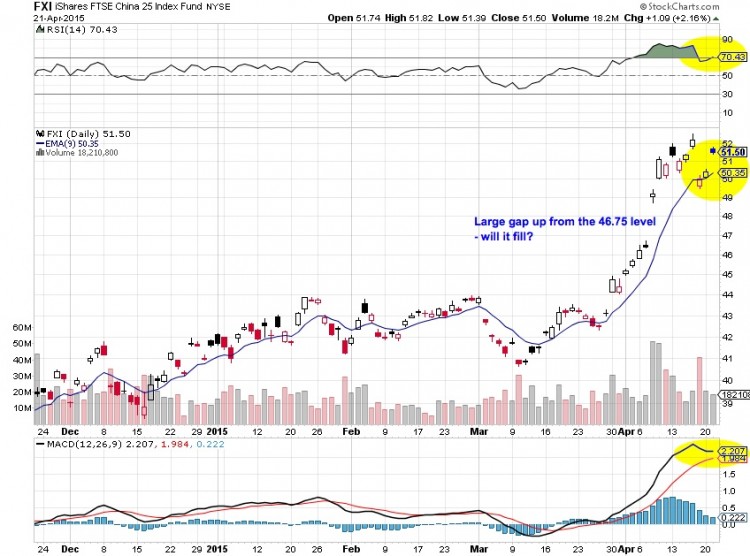Think you’ve found the perfect trading setup? A textbook bull flag ready to take off? An exhausted gap just begging for an opportunistic short?
Trading-focused social media and websites are packed with traders touting the seemingly perfect trading setup. While entries are only a small part of overall trading success (a topic for another article), your trading can be significantly improved by asking the simple question: “Would I take the other side of my trade?”
Assuming the role of the seller to your buy order (or vice versa) forces you to slow down and assess your decision-making process. Let’s look at the recent price action in the iShares China ETF (FXI) as an example.
Looking at the chart, you may be licking your chops as you see a break away gap at the 47 level just waiting to be filled on a retrace. The price has been nothing short of parabolic over the past two weeks and from experience you know that such a level of appreciation is not sustainable. You’re further encouraged by the rollover in the RSI which leads you believe that buyers are getting tired, at least in the short-term. The bounce back to 51.50 makes it even more enticing with a stop just above the recent swing high. An easy short, right?
Before you get worked up and begin touting your insightful chart reading, take a moment to think through why someone might take the long side of your ‘short’ trading setup. What’s in it for them? What might you be missing?
The other side of your trade may read this chart and see strength. A breakaway gap followed by some digestion and a hold at the 9 day EMA could mean that FXI is gathering strength for the next push higher. The rollover in the RSI is simply healthy consolidation and the lack of confirmation by the MACD says that FXI isn’t done yet.
The fundamental story out of China, with the government relaxing bank reserve requirements amid high levels of cash holdings by Chinese retail investors, might further stoke a bull’s belief in FXI. Add to it the limited ways in which a western investor can access Chinese equity markets and the other side could argue that demand for FXI will remain strong even if Chinese equity markets cool slightly.
So does this mean your dream short is flawed? Not at all. But like all trading methods that have a discretionary element, it is imperative that you consider the other side of your trade so can identify the conditions under which your trade (and hypothesis) will be proven wrong. It could be monetary easing by the Chinese Central Bank, it could be a new high in FXI – whatever the scenario, putting yourself in the shoes of the opposing trader will bring some objectivity to your approach and benefit your P and L in the process.
The author does not have a position in the mentioned securities. Any opinions expressed herein are solely those of the author, and do not in any way represent the views or opinions of any other person or entity.









